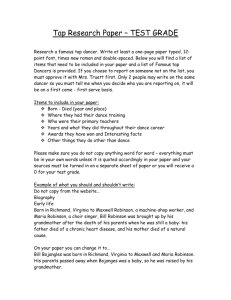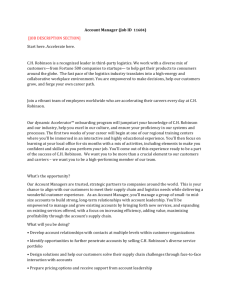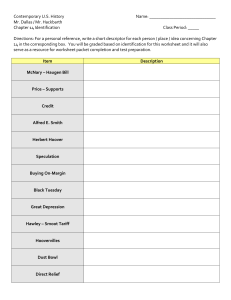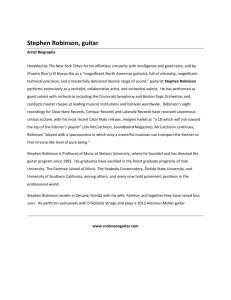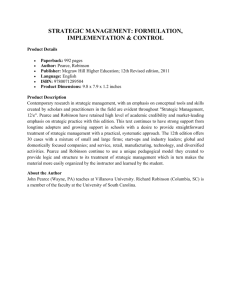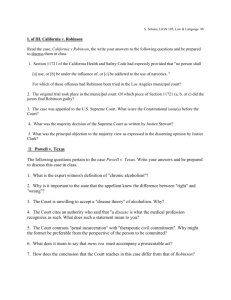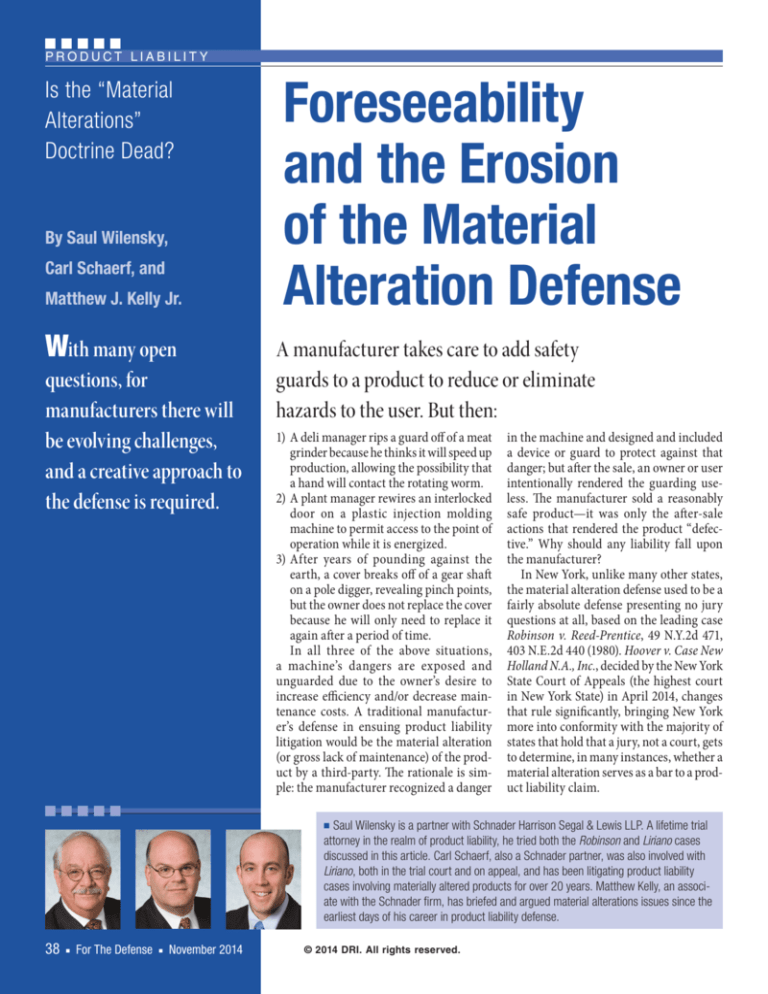
PRODUCT LIABILITY
Is the “Material
Alterations”
Doctrine Dead?
By Saul Wilensky,
Carl Schaerf, and
Matthew J. Kelly Jr.
With many open
questions, for
manufacturers there will
be evolving challenges,
and a creative approach to
the defense is required.
Foreseeability
and the Erosion
of the Material
Alteration Defense
A manufacturer takes care to add safety
guards to a product to reduce or eliminate
hazards to the user. But then:
1) A deli manager rips a guard off of a meat
grinder because he thinks it will speed up
production, allowing the possibility that
a hand will contact the rotating worm.
2)A plant manager rewires an interlocked
door on a plastic injection molding
machine to permit access to the point of
operation while it is energized.
3)After years of pounding against the
earth, a cover breaks off of a gear shaft
on a pole digger, revealing pinch points,
but the owner does not replace the cover
because he will only need to replace it
again after a period of time.
In all three of the above situations,
a machine’s dangers are exposed and
unguarded due to the owner’s desire to
increase efficiency and/or decrease maintenance costs. A traditional manufacturer’s defense in ensuing product liability
litigation would be the material alteration
(or gross lack of maintenance) of the product by a third-party. The rationale is simple: the manufacturer recognized a danger
in the machine and designed and included
a device or guard to protect against that
danger; but after the sale, an owner or user
intentionally rendered the guarding useless. The manufacturer sold a reasonably
safe product—it was only the after-sale
actions that rendered the product “defective.” Why should any liability fall upon
the manufacturer?
In New York, unlike many other states,
the material alteration defense used to be a
fairly absolute defense presenting no jury
questions at all, based on the leading case
Robinson v. Reed-­Prentice, 49 N.Y.2d 471,
403 N.E.2d 440 (1980). Hoover v. Case New
Holland N.A., Inc., decided by the New York
State Court of Appeals (the highest court
in New York State) in April 2014, changes
that rule significantly, bringing New York
more into conformity with the majority of
states that hold that a jury, not a court, gets
to determine, in many instances, whether a
material alteration serves as a bar to a product liability claim.
Saul Wilensky is a partner with Schnader Harrison Segal & Lewis LLP. A lifetime trial
attorney in the realm of product liability, he tried both the Robinson and Liriano cases
discussed in this article. Carl Schaerf, also a Schnader partner, was also involved with
Liriano, both in the trial court and on appeal, and has been litigating product liability
cases involving materially altered products for over 20 years. Matthew Kelly, an associate with the Schnader firm, has briefed and argued material alterations issues since the
earliest days of his career in product liability defense.
■ 38 For The Defense November 2014
■
■
© 2014 DRI. All rights reserved.
Substantial Modification
“Substantial modifications of a product from its original condition by a third
party which render a safe product defective are not the responsibility of the manufacturer…” So said the New York court in
1980 in Robinson, 49 N.Y.2d at 480, and the
doctrine is echoed in the Restatement (Second) of Torts §402A, where it states that
the manufacturer can only be liable if the
defective product “does not reach the user
or consumer without substantial change
in the condition in which it is sold.” Other
states have adopted §402A either expressly
or implicitly. Pennsylvania adopted §402A
in 1966 in Webb v. Zern, 422 Pa. 424, 220
A.2d 853 (1966), and has reiterated in more
recent years that “[t]he seller is not liable
if a safe product is made unsafe by subsequent changes… the question becomes
whether the manufacturer could have reasonably expected or foreseen such an alteration of its product.” Davis v. Berwind
Corp., 547 Pa. 260, 267, 690 A.2d 186 (1997).
Other states either adopted their own versions of §402A or simply have crafted their
own similar points of law. See, e.g., Tuttle
v. Sudenga Indus., 125 Idaho 145, 868 P.2d
473 (1994) (clarifying that while alteration is a defense, foreseeability plays an
important role and may command warning against modification); Brown v. United
States Stove Co., 98 N.J. 155, 484 A.2d 1234
(1984) (“The critical factor in determining
whether a subsequent substantial alteration of a product or its misuse can be attributed to a manufacturer as a proximate
result of an original design defect under
the risk-­utility standard is ‘foreseeability.’”)
Some states have adopted the doctrine
by statute. The Indiana Code, for example, dictates that a product liability claim
is defensible when the cause “is a modification or alteration of the product made
by any person after the product’s delivery to the initial user or consumer if the
modification or alteration is the proximate
cause of physical harm… [and] is not reasonably expectable to the seller.” Indiana
Code §34-20-6-5. The Idaho Code has similar language, though couched more in comparative fault. A product seller must prove
that an alteration or modification has proximately caused the claimant’s harm, and
then “the claimant’s damages shall be subject to reduction or apportionment to the
extent that the alteration or modification
was a proximate cause of the harm.” Idaho
Code §6-1405 (4).
Robinson, it should be noted, was a
stronger version of the doctrine for manufacturers, because the always thorny question of foreseeability was deemed irrelevant
to the question of manufacturer liability.
Material alterations at the hands of a
third party which work a substantial
change in the condition in which the
product was sold by destroying the functional utility of a key safety feature, however foreseeable that modification may
have been, are not within the ambit of a
manufacturer’s responsibility.
Robinson, 49 N.Y.2d at 481. The Restatement
(Third) of Torts: Products Liability likewise
memorializes this defense, and more explicitly brings the “foreseeability” question into
the fold. It notes that if an alteration is foreseeable, the manufacturer may be obliged
to adopt an alternative design. However, “[t]
he post-sale conduct of the user” by, for example, substantially modifying the product, “may be so unreasonable, unusual, and
costly to avoid that the seller has no duty
to design or warn against them. When the
court so concludes, the product is not defective within the meaning of subsection (b) or
(c).” Restatement (Third) of Torts: Products
Liability Chapter 1, §2, comment p. Misuse,
modification, and alteration.
Regardless of whether it is from case law
or statute, or the precise language, most
states have some sort of material alteration
defense. In New York, Robinson is the longheld, though occasionally limited, source
of law. Foreseeability was irrelevant under
pre-Hoover law. It is not irrelevant postHoover and we may anticipate that more
states will focus on foreseeability or modified foreseeability tests in the future when
considering material alterations defenses.
The Robinson and Hoover decisions
On April 1, 2014, the New York Court of
Appeals decided Hoover v. Case New Holland North America, Inc., 23 N.Y.3d 41, 11
N.E.3d 693 (2014). This decision affirmed a
jury determination of liability concerning
a post hole digger that was missing a safety
guard. All parties conceded that the accident, which involved a tragic arm amputation to a 16-year-old girl, would not have
happened with the safety guard in place.
Thirty-four years earlier, the New York
Court of Appeals decided Robinson v.
Reed-­Prentice. That case involved a plastic
injection molding machine that had been
materially altered by the employer, with
the knowledge, but not consent, of the manufacturer, removing an area of the safety
guarding to allow a certain beading operation to take place. Mr. Robinson, then 17,
It notesthat if an
alteration is foreseeable,
the manufacturer may
be obliged to adopt an
alternative design.
caught his hand in the point of operation
that was exposed solely due to the employer’s modification.
The majority held in Robinson that a
manufacturer’s nondelegable duty to design
and produce a product that is not defective
“is gauged as of the time the product leaves
the manufacturer’s hands.” Robinson, 49
N.Y.2d at 479. Substantial modification
after the product leaves the manufacturer’s
hands, therefore, is not the responsibility of
the manufacturer. As discussed above, and
critical for purposes of this article, foreseeability was not relevant to the question of
manufacturer’s liability.
Robinson spurred a strong dissent by
Justice Fuchsberg, who pointed out that
the manufacturer knew precisely what the
employer was doing to these machines, yet
opted to continue selling them at $28,000
per machine. In other words, had the majority considered foreseeability (as it apparently will post-Hoover), responsibility may
well have fallen with the manufacturer.
Back to the present, Hoover involved
a pole digger with a permanently affixed
safety shield. The shield, made of high-­
density polyethylene, covered a gearbox
input shaft and U-joint that, if unguarded,
created a dangerous nip/twist point. There
were two warnings on the machine not to
operate the machine without the shield
attached, as well as warnings in the manFor The Defense November 2014 39
■
■
PRODUCT LIABILITY
ual against operating the machine without the shield.
A farmer purchased the machine and
used it to drive poles—between 1,000 and
2,000 a year for a period of roughly four
years. The farmer estimated that about 10
percent of the time, he drove the machine
into the ground such that the guard made
solid impact with the earth. After two or
In other words,there was
a material issue of fact as to
whether the safety feature
itself was safe as designed.
three years, the guard tore off from the
repeated impaction. The farmer re-­bolted
the shield to the machine from time to
time, but after about four years of use the
shield broke off and he left it off. Despite
the fact that he replaced other parts of the
machine as they became worn out, he never
replaced the shield because he determined
that it would simply break off again.
Roughly four years later, he loaned the
machine to a family friend. The friend
did not know that the shield had been
removed and never replaced. While operating the machine, he solicited the help
of the sixteen-­year-old plaintiff to guide
the driver, putting her in proximity to
the now unguarded area. Without the
shield attached, she became caught in the
machine and tragically suffered injuries,
including loss of an arm.
In Hoover, the Court of Appeals distinguishes Robinson—it did not, however,
purport to overturn it, holding only that in
cases like this “where the plaintiff raises a
colorable claim that the product was dangerous because of a defectively designed
safety feature and notwithstanding the
modification by the third party.” Hoover,
23 N.Y.3d at 57 (emphasis in original). In
other words, there was a material issue of
fact as to whether the safety feature itself
was safe as designed. This was based on
evidence including:
• Testimony that the shield the owner
removed had been destroyed by years
40 For The Defense November 2014
■
■
of “wear and tear” and would no longer
stay attached to the digger. It essentially
had ceased to provide protection from
the gearbox—its “functional utility” had
been destroyed.
• An expert affidavit that averred the
shield was “not reasonably safe” because
it was not “designed to last the life” of
the digger.
The court reasoned first that these facts
distinguished Hoover from Robinson in
that the modification was not necessarily made to circumvent the safety feature,
rather it was the destruction of the functional utility that served as the modification. Second, the court stated that while
it “did not necessarily agree” that a safety
device had to last the life of a product, “defendants did not adequately refute plaintiff’s assertions that the plastic shield failed
prematurely under the circumstances presented here.” Hoover, 23 N.Y.3d at 58.
It is hard to know the practical import of
the distinction suggested by the court, and
it will certainly spawn future litigation as
it seems divorced from the realities of litigation—particularly in New York, which
does not allow for expert depositions. It
has long been the law of New York that an
employer or other end user, not the manufacturer, has the duty to keep equipment
well-­maintained. Mayorga v. Reed-­Prentice
Packaging Mach. Co., 238 A.D.2d 483 (2d
Dep’t 1997). Will claims now be allowed
that the product was defective because it
required excessive or too frequent maintenance? That frankly appears to be what
the expert argued in Hoover, and while the
majority would not sign on to the proposition that “no safety device is reasonably
safe unless it is designed to last the lifetime
of the product on which it is installed,” it
becomes exceedingly difficult to predict
where the New York courts will draw the
line between a maintenance defect and a
product defect in the wake of Hoover.
Put differently, a claim that a guard is
defective because it comes off after years of
heavy usage, colorable post-Hoover, is an
invitation to problems and to more litigation. What about a spider guard on a meat
grinder that comes loose after 50 years due
to rust or corrosion? What about electrical shielding on an aerial device that wears
away after years of usage (or is purposefully removed)? Any kind of maintenance
defect can be transformed into a product
defect by having an expert say “it needed
maintenance prematurely.” And because
experts cannot be deposed in New York,
feigned issues of fact can be constructed
using weak expert affidavits, mandating
trials in the process.
Certainly the lone dissent in Hoover, by
Justice Smith, is savvy to the problems this
decision creates:
The majority suggests that Robinson
is distinguishable because the product
here, unlike the product there, was not
“safe at the time of sale” (majority op at
19, quoting Robinson, 49 N.Y.2d at 481).
But the post-hole digger in this case was
safe at the time of sale in the simple sense
that, while the safety shield remained in
place, it could not have caused Jessica
Bowers’s accident (see majority op at 22:
“Both parties agree that plaintiff would
not have been injured if an intact shield
had been in place on the date of the accident”). And the safety shield would have
remained in place if Smith had not battered it into uselessness, thrown it away
and not bothered to replace it.
Hoover, 23 N.Y.3d at 63. A decision that
allows an analysis of whether the safety
guard was “built to last” is a decision that
invites expert theories (without benefit of
pre-trial depositions) that will predictably
circumvent the bar imposed by Robinson.
“Built to last” will presumably become
the theory du jour in New York product liability litigation involving a modified product. The challenge for the defense is to find
ways of countering such a theory. Such
challenges have been posed by other post-­
Robinson cases, and have been routinely
met by the defense bar for a generation.
How to Understand Robinson’s
Material Alteration Defense
in Light of Hoover
One can, and many commentators will,
argue that Hoover implicitly overrules Robinson. We do not agree, and our opinion is
informed by the steady stream of precedent Robinson has spawned. Hoover creates
an exception to Robinson, but with good
defense strategy, this exception will not
swallow the rule entirely or perhaps even
predominantly. While the below exceptions are all from New York State Law, the
analysis is applicable across jurisdictions as
varying factual situations call for reevaluation of the state of the defense, and assessment of its strength.
Three cases in particular highlight the
exceptions New York courts have carved
from Robinson:
• Only six years after Robinson was decided, the court of appeals decided Lopez v. Precision Papers, 67 N.Y.2d 871, 492
N.E.2d 1214 (1986). That case involved a
forklift guard that was designed to be removable and held in place with wing nuts.
The court held that there was “evidence
in this record that the forklift was purposefully manufactured to permit its use
without the safety guard.” For this reason, the Robinson doctrine was held inapplicable in a case where the employer
and employee failed to utilize the guard
and a rollover accident ensued.
• Three years later, in 1989, the first
department decided Tavares v. Hobart
Waste Compactor, Inc., 151 A.D.2d 251
(1st Dep’t 1989). That case held that a
question of ease of defeat of an interlock
could foreclose a Robinson defense.
• Then, in 1998, the court of appeals held
that the Robinson defense does not apply
to failure to warn claims. Liriano v.
Hobart Corp., 92 N.Y.2d 232, 700 N.E.2d
303 (1998). That case held that while
Robinson served to bar a design claim
where the owner removed a safety guard
from a meat grinder, the plaintiff’s case
could survive because the manufacturer
failed to warn of the consequences of
that modification.
Proper preparation in discovery for
the assertion of a Robinson defense has
always required an understanding of the
nature of the modification in light of these
exceptions. Where a modification is easy
to accomplish (i.e., an interlock that can be
defeated without rewiring, or a guard that
is designed to be removable), the defense
probably does not lie. If, on the other hand,
it can be shown that specialized knowledge
or tools were required to effectuate the
modification, the defense probably would
lie. Similarly, if there were explicit warnings against modification, you may be able
to rely on Robinson to defeat any claim of
failure to warn (under Liriano). Hoover
changes none of this traditional defense
strategy. All of this strategy, of course, is
what has been regularly employed in other
states that do not have the benefit (or detriment depending on your viewpoint) of the
Robinson decision.
In our view, informed in part by the
oral argument that took place in Hoover
(available at http://www.nycourts.gov/ctapps/
arguments /2014/ Feb14/ Transcripts / 02121436-Oral-Argument-Transcript.pdf), the court of
appeals does not mean to overrule Robinson in blanket fashion. Hoover will simply
add one more nuance to defense counsel’s thought process in deciding whether
to make a motion for summary judgment.
The Hoover court seemed preoccupied with
the notion that, in the normal operation of
the product, the guard will make contact
with the ground and eventually become
dislodged. While majority and dissent talk
in terms of the “foreseeability” of such an
occurrence, really foreseeability may not
the right question to be asking. “Foreseeability” is often a tautology in application.
You take a precaution to protect against a
hazard. The hazard, therefore, is foreseeable. If you know that people have removed
guards in the past, arguably it is foreseeable
that they will do so in the future. However,
none of this is a reasoned foreseeability
argument because it assumes that it is
“reasonable” for people like employers and
owners to destroy safeties purposefully.
Thus, the real issue to analyze may be
whether the product was designed for the
conditions of usage. If a guard is so located
and situated that it will reach and become
embedded in the ground 10 percent of the
time, as the majority suggests, there may
well be a question about whether that particular guard represented a good design
choice in the first place. True, with the
guard in place, the accident does not occur.
However, if the guard is claimed to be
defective because it cannot withstand the
circumstances of ordinary usage, one can
see why the public policy concerns of Robinson ought not apply, and foreseeability
questions might be fair ones to pose.
There is reason to doubt that the subject
product saw “ordinary usage” in Hoover,
despite what the court of appeals tells us.
Indeed, according to the decision, the manufacturer expressly warned against the
use of the pole driver to dig as deeply as to
make contact between guard and ground.
In the perverse world of product liability,
giving such a warning may tell a court
that such a usage was “foreseeable.” That
it might have been “foreseeable,” does not
make it “ordinary.” By way of example,
an “ordinary” use of a hammer is to bang
nails, not to bang human skulls. However
“foreseeable” the use of a hammer for the
purpose of murder may be, a hammer is
not considered defective because it can
foreseeably be used as a weapon.
Hoover changes
none of this traditional
defense strategy.
It may be unrealistic to ask an end user
to replace a guard continually that is going
to come off routinely in normal operation.
The questioning at oral argument suggests
that such considerations were in play in
the majority’s decision, albeit not particularly clearly expressed by the decision that
was issued.
Proper Analysis of “Foreseeability”
Is a Major Defense
Consideration Post-Hoover
It remains New York law that the question
of duty is not co-­extensive with the question of foreseeability. The New York Court
of Appeals held as such in 1976:
Foreseeability should not be confused
with duty.… Unlike foreseeability and
causation, both generally factual issues
to be resolved on a case-by-case basis
by the fact finder, the duty owed by one
member of society to another is a legal
issue for the courts.
Pulka v. Edelman, 40 N.Y.2d 781, 785, 358
N.E.2d 1019 (1976). Therefore, while foreseeability may serve to inform the scope of
a duty, it does not create a duty where one
does not otherwise exist.
The Restatement (Third) of Torts struggles with this distinction, particularly in
the context of product modification:
Foreseeable product misuse, alteration,
and modification must also be considered in deciding whether an alternative design should have been adopted.
The post-sale conduct of the user may
be so unreasonable, unusual, and costly
For The Defense November 2014 41
■
■
PRODUCT LIABILITY
to avoid that the seller has no duty to
design or warn against them.
There is a critical difference between
“foreseeability” as applied to the plastic
injection molding machine in Robinson
and the pole driver in Hoover. In Robinson, the modification was not merely foreseeable, but it was actually known by the
manufacturer. However, focusing on the
design of the machine itself, it took special
tools and skills to accomplish the modification. Therefore, it could not be said
that it was foreseeable from the perspective of machine design that the modification would occur. According to Hoover
(we do not pass on whether this is actually supported by the record), it would
have been foreseeable from the perspective of machine design that the guard
would repeatedly impact the ground and
come loose.
Having courts understand the difference between a hazard purported to be
inherent in the design of the machine
(Hoover) and one that only arises with
modification of the design using special
tools and labor (Robinson) is going to be
a critical defense obligation going forward. Removal of a product guard with
a blow torch is presumably going to be
non-­actionable post-Hoover. Rewiring of
interlocks is presumably also going to be
non-­actionable. The more difficult questions will arise, as explained throughout,
in the context of poor, shoddy, or non-­
existent maintenance.
Where Do We Go from Here
Corporate and/or expert witnesses must
be prepared to justify the design choices
of a guard that may become damaged in
the foreseeable operation of the product.
In Hoover, the court took interest in the
plaintiff’s expert’s testimony that the safety
device could have been designed to be more
durable. The battle between defect and
maintenance is going to be a pitched battle in cases of this nature, and there are no
bright lines as of yet for guidance. Manufacturers can take some solace in the
statement that the court of appeals does
not necessarily subscribe to the notion
that a safety must last for the useful life
of the product. How long a safety must
last, however, may ultimately be deemed
a factual question for the jury. Attacking
42 For The Defense November 2014
■
■
an expert theory that “the guard should
have fared better” is going to be a primary
defense theme going forward, and likely
one requiring trial rather than a summary
judgment motion.
As discussed above, “forseeability” may
once again matter. Robinson held that “[p]
rinciples of forseeability … are inapposite
where a third party affirmatively abuses a
product by consciously bypassing built-in
safety features.” The majority seemed to
suggest, the dissent pointed out, that Robinson’s defense should apply only when the
misuse of the product is unforeseeable. In
this, we would argue, the dissent perhaps
reads too much into the majority opinion.
The “misuse” of the product is its operation
without a guard. A design defect claim in
New York considers reasonably foreseeable
uses and misuses. The guard, in order to be
deemed “reasonably safe when sold,” must
be safe not only for intended uses, but also
for reasonably foreseeable situations including “misuses,” such as the 10 percent
of the time that the digger would embed
the guard into the earth. Where a permanent guard is intentionally bypassed,
Robinson presumably still applies. As discussed above, if the facts include overwhelming lack of maintenance leading to
a guard falling off, without replacement,
such is the quandary created by Hoover.
The question of maintenance versus defect
will presumably be litigated for the next
few years. We do not minimize this issue,
which is going to prove quite real for manufacturers. It seems unlikely, however, that
Hoover will serve as a wholesale repudiation of the Robinson doctrine in the context of purposeful modifications that are
difficult to accomplish and require special
labor and tools.
The dissent indicates that a motivating factor in this outcome is “soak-therich fact-­finding.” In Hoover, the farmer
that arguably abused the machine and
never bothered to replace the safety device
simply did not have the same “corporate”
resources as the manufacturer and distributor. Most equipment accidents happen in a workplace context, and there is an
employer with unlimited workers’ compensation coverage involved. As anyone who
has practiced in New York will assuredly
recognize, having a vehicle to an employer’s
pocket (or rather an insurer’s pocket) will
serve to motivate the bringing of more and
more lawsuits of this type. As the dissent
implies, one wonders whether in Hoover,
had the injured 16-year-old female plaintiff
been protected and provided for by workers’ compensation, would the determination have been the same?
In Liriano, cited above, the allocation
between manufacturer and employer in
a guard removal case was found to be 95
percent to the employer. This is an added
manufacturer’s incentive to develop the
employer’s failures of maintenance: even if
you cannot get summary judgment, you can
frame the allocation.
Finally, there is another open question.
If a safety can itself be defective because it
requires excessive maintenance, or “should
have lasted longer,” what about a safety
that is perceived by users to interfere with
production? Employers routinely tape
down interlocks or rewire them. They cut
off guards that they feel interfere. Can a
plaintiff’s expert successfully opine, postHoover, that the safety is defective because
it slows production (or is perceived to slow
production) and, therefore, the manufacturer should have anticipated it would be
cut off? Such claims have been rejected
under Robinson in the past. Whether they
are open game post-Hoover remains to be
seen. If the discussion on “foreseeability”
above is accurate, the answer ought to be
that such arguments remain non-viable as
a matter of New York law.
Conclusion
Hoover will likely spawn a lot more litigation in New York State. To some degree it
brings New York into conformity with the
rest of the country, and in other respects it
is even more plaintiff friendly than comparable law outside the jurisdiction. It establishes a potential pathway around Robinson
by allowing plaintiffs to claim that the
safety itself was defective, whether because
it required excessive maintenance or interfered with production. How future cases
will be adjudicated remains an open question. There is a new route to the employer’s coverage, and it will be exploited. For
manufacturers sued in New York, and elsewhere, there are new challenges, and a creative approach to the defense is required.
There are many open questions to answer.

